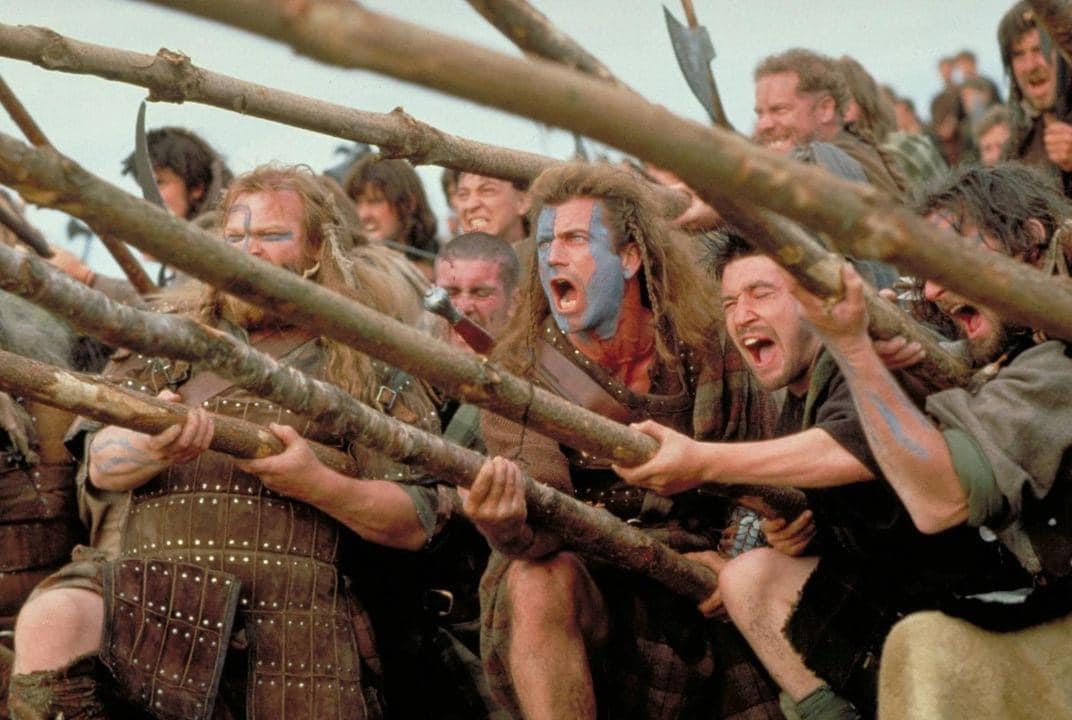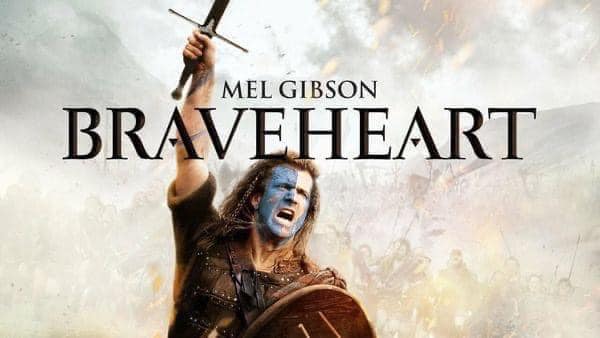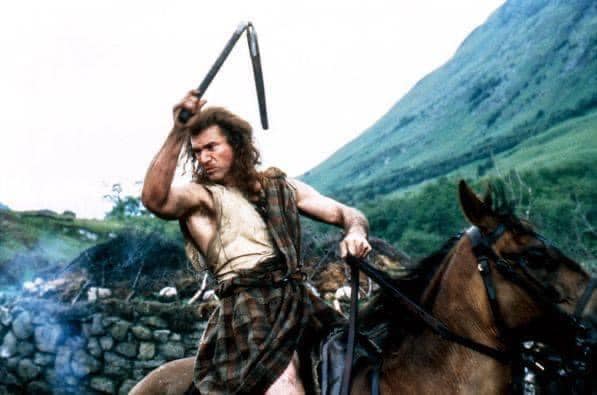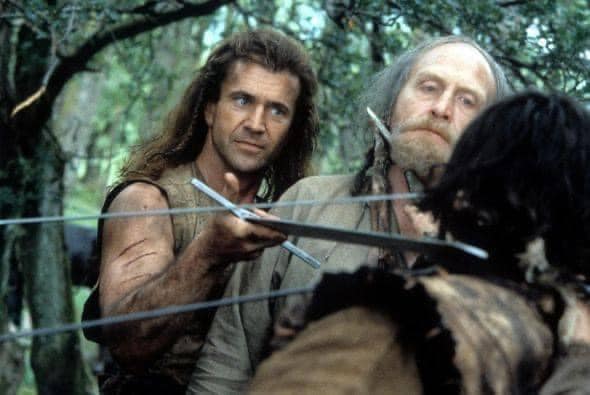Braveheart (1995): A Triumph of Spirit and Sacrifice
In the grand tapestry of cinematic history, Braveheart emerges as a monumental work, a sweeping epic that weaves together themes of freedom, love, and the unyielding spirit of a people. Directed by and starring Mel Gibson, this 1995 film is not merely a historical retelling but a passionate invocation of the human spirit’s struggle against oppression.

A Tale of Valor
Set against the backdrop of 13th-century Scotland, Braveheart chronicles the life of William Wallace, a man transformed by personal loss into a fervent leader of rebellion against English tyranny. The film opens with the haunting specter of Wallace’s childhood, scarred by the brutal murder of his father and brother at the hands of the English. This early trauma ignites a flame within him, propelling him into a life of defiance and resistance.

Gibson’s portrayal of Wallace is both raw and profound. He embodies the character’s evolution from a simple farmer to a charismatic leader, rallying the Scottish clans to fight for their independence. The narrative does not shy away from the complexities of heroism; Wallace is not portrayed as an infallible figure but rather as a man grappling with the weight of his choices and the burden of leadership.

A Symphony of Emotion
Braveheart is marked by its emotional depth, deftly exploring the themes of love and loyalty. The relationship between Wallace and his beloved Murron (Catherine McCormack) serves as the film’s emotional core, a poignant reminder that the fight for freedom is also a deeply personal battle. Their love, both tender and tragic, elevates the stakes of Wallace’s quest, lending it a sense of urgency that resonates throughout the film.
The film’s score, composed by James Horner, serves as an evocative accompaniment to the narrative, imbuing each scene with a sense of grandeur and gravitas. The stirring melodies echo the tumult of battle, the heartache of loss, and the triumph of the human spirit, reinforcing the film’s emotional landscape.

The Art of War
Visually, Braveheart is a masterpiece of cinematic craftsmanship. The battle sequences are both visceral and breathtaking, capturing the chaos of war with an unflinching eye. The cinematography by John Toll is striking, juxtaposing the beauty of the Scottish landscape with the brutality of battle. The large-scale conflicts are choreographed with precision, showcasing not only the physicality of combat but also the camaraderie and brotherhood forged in the heat of war.

Themes of Freedom and Sacrifice
At its essence, Braveheart is a rousing anthem of freedom. It explores the concept of sacrifice, both personal and collective, as Wallace and his compatriots confront insurmountable odds in their quest for independence. The film challenges viewers to consider the price of freedom and the lengths one must go to secure it. Wallace’s iconic rallying cry—“They may take our lives, but they’ll never take our freedom!”—resonates as a timeless declaration of the human desire for autonomy and self-determination.
A Lasting Impact
As the film draws to a close, it leaves an indelible mark on the viewer’s psyche. Braveheart transcends its historical context, becoming a universal tale of resilience and hope. Its portrayal of the struggle for justice and the human capacity for love and sacrifice serves as a powerful reminder of the enduring spirit of those who fight for what they believe in.
In the pantheon of cinematic triumphs, Braveheart stands tall, a testament to the power of storytelling and the unwavering spirit of humanity. It invites us to reflect on our own battles, the sacrifices we make, and the legacies we leave behind. In the end, it is not merely a film about a man and his quest for freedom; it is an ode to the indomitable spirit that resides within us all, a clarion call to stand firm in the face of adversity and to never relinquish our quest for justice and love.
